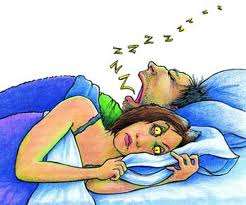Sleep apnea

Sleep apnea is a sleep disorder characterized by pauses in breathing during sleep.
Each episode, called an apnea (Greek: Απνοια (apnoia), from α- (a-), privative, πνέειν (pneein), to breathe), lasts long enough so that one or more breaths are missed, and such episodes occur repeatedly throughout sleep.
The standard definition of any apneic event includes a minimum 10 second interval between breaths, with either a neurological arousal (a 3-second or greater shift in EEG frequency, measured at C3, C4, O1, or O2), a blood oxygen desaturation of 3-4% or greater, or both arousal and desaturation. Sleep apnea is diagnosed with an overnight sleep test called a polysomnogram, or a «Sleep Study».
Clinically significant levels of sleep apnea are defined as five or more episodes per hour of any type of apnea (from the polysomnogram). There are three distinct forms of sleep apnea: central, obstructive, and complex (i.e., a combination of central and obstructive) constituting 0.4%, 84% and 15% of cases respectively.
Breathing is interrupted by the lack of respiratory effort in central sleep apnea; in obstructive sleep apnea, breathing is interrupted by a physical block to airflow despite respiratory effort. In complex (or «mixed») sleep apnea, there is a transition from central to obstructive features during the events themselves.
Regardless of type, the individual with sleep apnea is rarely aware of having difficulty breathing, even upon awakening. Sleep apnea is recognized as a problem by others witnessing the individual during episodes or is suspected because of its effects on the body (sequelae). Symptoms may be present for years (or even decades) without identification, during which time the sufferer may become conditioned to the daytime sleepiness and fatigue associated with significant levels of sleep disturbance.
Wikipedia
the free encyclopedia


